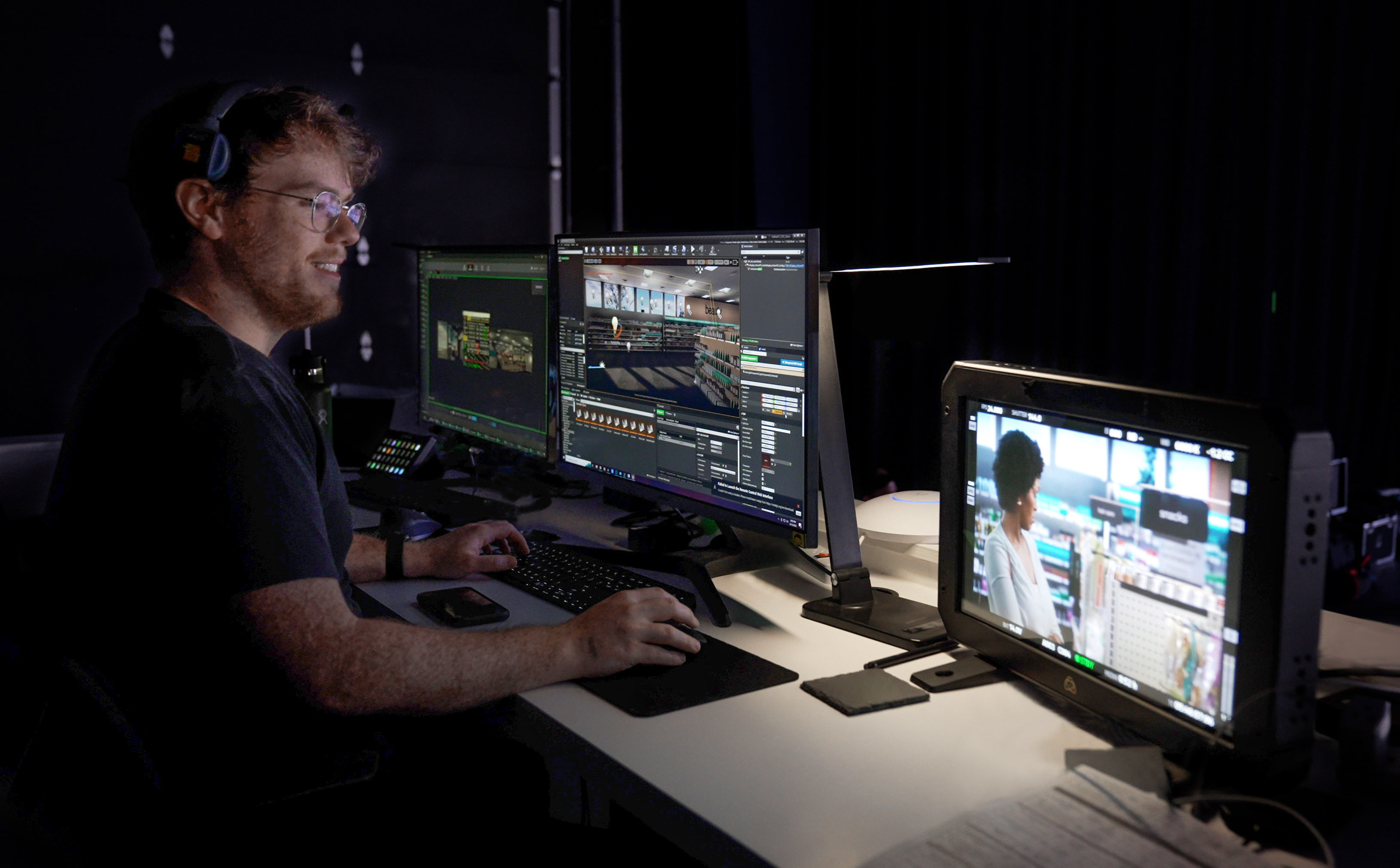How virtual production workflows fuel efficiency
Efficiency becomes more than a promise in virtual production (VP) – it’s the celebrated result of an agile new workflow that creates opportunities to use time and money more effectively.
With virtual production, many aspects of the post-production process are merged into the pre-production phase, which pushes key stakeholders to align on critical creative and logistic decisions before turning the cameras on.
Because VP gives us control over the environment, from the practical elements (or props) to the on-screen environments we’ve created in Unreal Engine, we’re able to avoid a lot of surprises and time-consuming, tactical creative conversations that have to be talked through on-location.
Think of it this way — When shooting in a brick and mortar location many elements within a retail store may not be camera friendly or align with your intended concept. Arriving on location, hours may be wasted moving unwanted items from the background or stocking the shelves with products to add color. You may discover a structural column in the middle of your ideal shot or find yourself removing things that are off-brand. You can spend a lot of time adjusting to the reality of the location only to find out it’s still not working on-camera.
When shooting in VP, all of the elements that will be in your shot have already been decided – from the store signage to the products on the shelves and other environmental details, everything is created beforehand.
Now, instead of scrambling to make adjustments while the stress builds and the budget starts to burn, you can spend that time focused on getting the best performance possible from your talent. In this respect, virtual production can eliminate a lot of trial and error and help to maximize the efficiency of your production.



